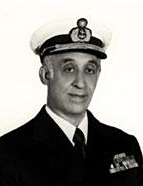

Teixeira da Mota’s study appeared at a time of animated intellectual controversy. On the one hand were the historians who supported the regime; on the other, those who fought against a history transformed into propaganda and enslaved to the political ideologies of an authoritarian state. The “duel” that was to rage between Father Dias Dinis, who brought forward the publication of O V Centenário do Descobrimento da Guiné Portuguesa à Luz da Crítica Histórica (“The 5th Centenary of the Discovery of Portuguese Guinea in the Light of Historical Criticism”) and Duarte Leite, Magalhães Godinho and Damião Peres, bears witness to this intellectual confrontation. Teixeira da Mota – a 26-year-old naval officer – consciously took one side: that of a scientific history that helps us understand the past and society. The role of his study on the discovery of Guinea (1946) was solely that of a contribution designed to help clarify the ongoing debate.
One of the greatest transformations that took place during the Discoveries was in the art of navigation. Sailing the open seas, far from the coast, with no obvious visible points of reference and in the face of adverse winds and currents that led them to plunge deep into the ocean, mariners had to resort to the stars in order to navigate the high seas. Heirs to Mediterranean navigation techniques underlain by “course and dead reckoning”, plotted charts and the mariner’s compass, the plumb line, and above all the pilot’s experience (reckoning), in the mid-15th century the Portuguese were to develop a new form of navigation based on the use of the stars and the calculation of a geographic coordinate – latitude.
From 1938 onwards, António Barbosa was to prove that elevations were never used to navigate in the Mediterranean until the 17th century. In the inland sea, ships essentially sailed along the coastline, using the description of the coasts contained in portolan charts, together with maritime charts with magnetic lines that gave a flawed depiction of the Mediterranean in that the calculations used magnetic rather than true north. Writing around twenty years after António Barbosa, Teixeira da Mota added weight to this position with A Arte de Navegar no Mediterrâneo nos Séculos XIII-XVII e a criação da Navegação Astronómica no Atlântico e Indico (1957). In it, he advanced the study of this question a little further, particularly in terms of the comparison between different ways of navigating the oceans – a discussion to which he added the Arab navigation of the Indian Ocean.
